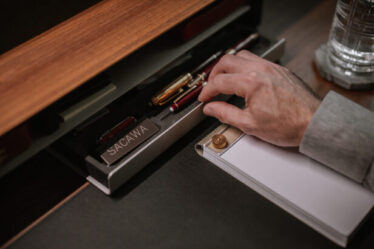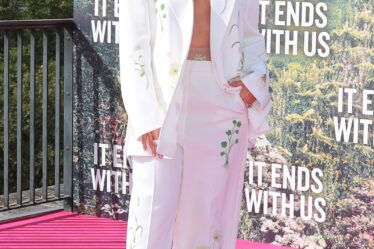
PARIS — Former Louis Vuitton chief executive Michael Burke is stepping back from his role overseeing LVMH’s Fashion Group — at least in its existing configuration — just four months after taking the helm of the unit that currently houses all of the conglomerate’s fashion brands apart from Vuitton, Dior and Loro Piana, sources familiar with the matter said.
Since April, executives including Dior CEO Delphine Arnault and Sidney Toledano, Burke’s predecessor who transitioned to an advisory role in February, have stepped in to manage key matters at some of the division’s labels, which include Celine, Fendi and Loewe, the sources said.
French investigative website Glitz Paris has also reported on Toledano’s return. Burke’s deputy, Pierre-Emmanuel Angeloglou, remains in his role overseeing the Fashion Group’s smaller brands, including Kenzo, Marc Jacobs, Pucci and Stella McCartney.
Whether Burke will exit his role or simply take on a retooled scope remains unclear. A representative for LVMH issued a blanket denial regarding the sources’ claims, declining to elaborate.
Burke has been a trusted deputy of LVMH’s chairman and controlling shareholder Bernard Arnault for over four decades, first working with the French billionaire when he was focussed on developing real estate projects in the US in the early 1980s. Burke went on to serve as CEO of Fendi, Bulgari and Louis Vuitton, before being named chief of LVMH’s Fashion Group in January.
There, Burke inherited a tricky portfolio: Givenchy is without a designer, while Hedi Slimane, the creative director of Celine, has been engaged in a thorny contract negotiation that could lead to his exit, sources in the group say.
And after months of negotiations aiming to place former Gucci creative director Alessandro Michele in a top role at LVMH, talks fell apart and Michele went to Mayhoola- and Kering-owned Valentino.
Meanwhile, the rationale for continuing to house billion-euro-plus businesses like Celine, Fendi and Loewe in the same unit as smaller labels like Pucci and Kenzo — which face very different challenges — has come into question in recent years. Celine, for example, is now the group’s third biggest fashion brand, HSBC estimates, having surpassed labels like Fendi (which was previously managed outside the Fashion Group structure) and Loro Piana (which still is).
Complicating matters further, the luxury industry’s growth has also cooled following a multi-year surge. LVMH reported fashion and leather goods sales up 2 percent on an organic basis in the first quarter, its slowest growth in four years.
The news comes with LVMH’s senior ranks in flux beyond the Fashion Group. In April, Antonio Belloni, the group’s second-in-command as deputy CEO, exited the company, with Stéphane Bianchi (formerly head of the watches and jewellery division) promoted to the role. Chairman Bernard Arnault, 75, also added two more of his children, Alexandre and Frédéric, to the company’s board during the company’s annual meeting last month.
LVMH is part of a group of investors who, together, hold a minority interest in The Business of Fashion. All investors have signed shareholders’ documentation guaranteeing BoF’s complete editorial independence.


